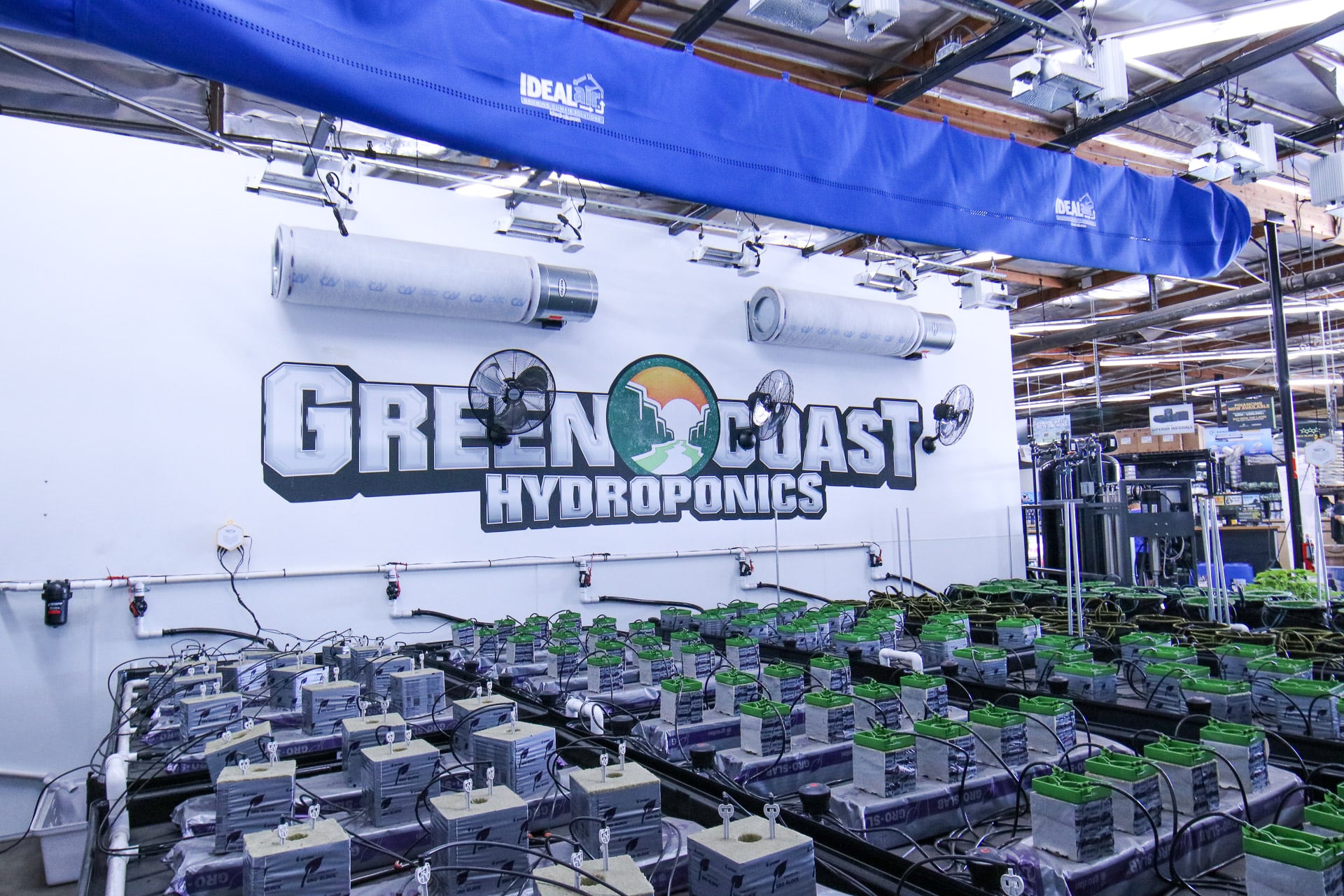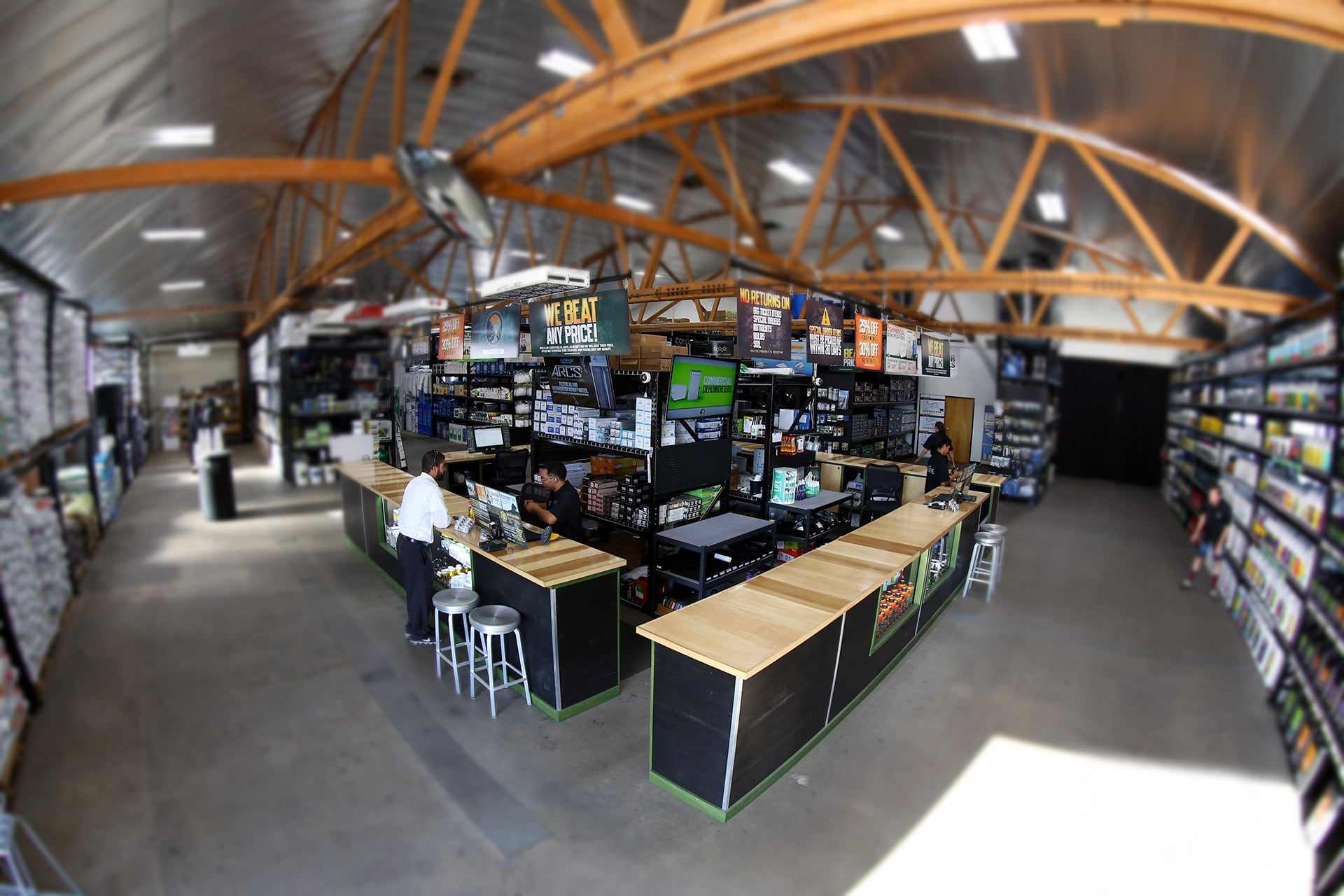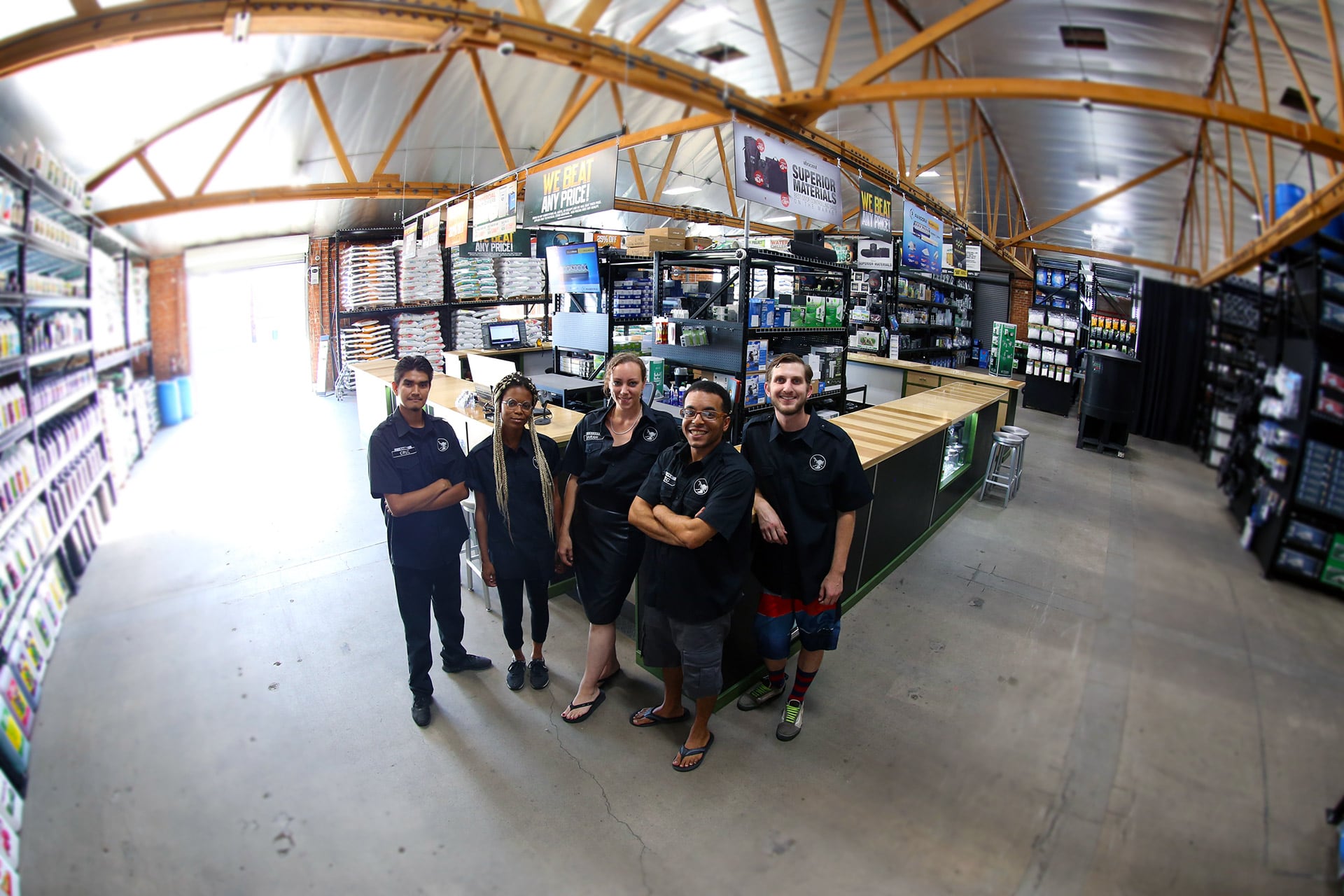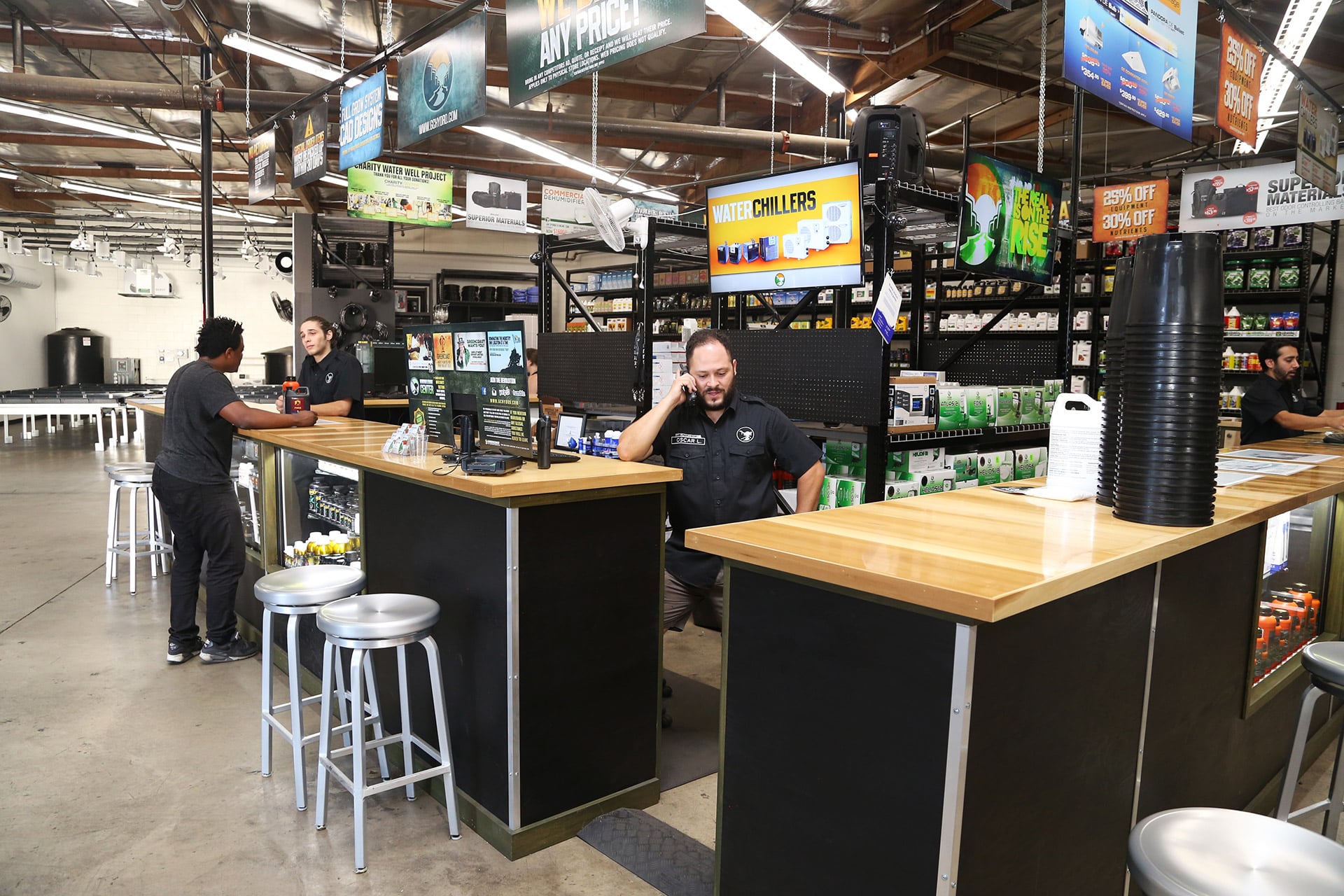Hydroponics los angeles – Welcome to the world of hydroponics in Los Angeles, where innovation meets sustainability to bring you the freshest, most flavorful produce imaginable. In this comprehensive guide, we’ll delve into the intricacies of hydroponic systems, plant selection, nutrient management, lighting, pest control, marketing, economics, sustainability, and educational resources.
Get ready to embark on a journey that will transform your understanding of urban farming and inspire you to grow your own thriving hydroponic garden.
Hydroponic Systems in Los Angeles
Los Angeles is a hub for hydroponic farming, with a wide range of systems employed to cultivate plants in controlled environments.
If you’re interested in hydroponics in Los Angeles, you’ll need the right equipment. One of the most important pieces of equipment is a hydroponics container. Hydroponics containers come in a variety of shapes and sizes, so you can find one that’s perfect for your needs.
Whether you’re growing a few plants or a large commercial crop, you can find a hydroponics container that will help you grow healthy, productive plants. To find the best hydroponics containers, check out our comprehensive guide: hydroponics container . This guide will help you choose the right container for your needs and budget.
With the right hydroponics container, you can grow beautiful, healthy plants all year long.
Hydroponic systems offer several advantages, including:
- Increased crop yields due to optimal nutrient delivery and controlled conditions.
- Reduced water consumption compared to traditional farming methods.
- Year-round production,不受季节限制.
However, hydroponic systems also have some disadvantages:
- Higher initial investment costs compared to traditional farming.
- The need for specialized knowledge and technical expertise.
- Potential for system failures that can impact crop health.
Types of Hydroponic Systems
There are several types of hydroponic systems used in Los Angeles, each with its own advantages and disadvantages:
Nutrient Film Technique (NFT)
In NFT systems, a thin film of nutrient-rich water continuously flows over the roots of plants suspended in channels. NFT systems are highly efficient and productive but require precise control of nutrient levels and water flow.
Deep Water Culture (DWC)
DWC systems involve suspending plants in deep, aerated reservoirs of nutrient-rich water. DWC systems are simple to operate and maintain but require careful monitoring of water quality and dissolved oxygen levels.
Aeroponics
Aeroponic systems suspend plant roots in the air and mist them with nutrient-rich water. Aeroponic systems provide excellent oxygenation but require precise control of humidity and nutrient levels.
Ebb and Flow (Flood and Drain)
Ebb and flow systems involve periodically flooding growing trays with nutrient-rich water and then draining it away. Ebb and flow systems are versatile and can accommodate a wide range of plant sizes and types.
Examples of Successful Hydroponic Farms in Los Angeles
Several successful hydroponic farms operate in Los Angeles, including:
- Lettuce Grow: A large-scale hydroponic farm that produces a variety of leafy greens.
- Gotham Greens: A rooftop hydroponic farm that grows herbs, microgreens, and vegetables.
- Urban Produce: A community-supported agriculture (CSA) farm that provides fresh, locally grown produce to its members.
Plant Selection for Hydroponics in Los Angeles

Los Angeles’s Mediterranean climate, with warm temperatures and abundant sunshine, is ideal for hydroponic cultivation. However, choosing the right plants is crucial for success. Consider these factors:
- Light requirements:Most plants need at least 6 hours of sunlight per day. If natural light is limited, consider using grow lights.
- Nutrient needs:Hydroponic plants need a balanced supply of nutrients. Choose plants with similar nutrient requirements to simplify feeding.
- Growth rate:Some plants grow quickly, while others take their time. Consider the space available and the desired harvest time.
Suitable Plants for Los Angeles Hydroponics
- Leafy greens:Lettuce, spinach, kale, and herbs like basil and mint thrive in hydroponics.
- Tomatoes:Cherry tomatoes, Roma tomatoes, and beefsteak tomatoes are popular choices.
- Cucumbers:English cucumbers and Persian cucumbers grow well hydroponically.
- Strawberries:Everbearing and June-bearing strawberries produce fruit year-round.
- Peppers:Bell peppers, chili peppers, and habaneros add flavor and color to your harvest.
Tips for Maximizing Growth and Yield
- Monitor pH and nutrient levels:Use a pH meter and nutrient tester to ensure optimal conditions for plant growth.
- Provide adequate lighting:Supplement natural light with grow lights if necessary.
- Prune regularly:Remove dead or diseased leaves and stems to encourage new growth.
- Control pests and diseases:Inspect plants regularly and treat any issues promptly.
Nutrient Management in Hydroponics

Nutrient management is crucial for ensuring optimal plant growth and development in hydroponic systems. Unlike soil-based cultivation, where plants obtain nutrients from the soil, hydroponic plants rely entirely on the nutrient solution provided.
To effectively manage nutrients in hydroponics, it’s essential to understand the principles of nutrient uptake and the specific nutrient requirements of different plant species.
Nutrient Uptake in Hydroponics
In hydroponics, plants absorb nutrients directly from the nutrient solution through their roots. The nutrient solution contains a balanced blend of essential elements, including nitrogen, phosphorus, potassium, calcium, magnesium, and trace elements.
The rate of nutrient uptake depends on several factors, such as the plant species, growth stage, environmental conditions, and the concentration of nutrients in the solution.
Selecting and Using Nutrients
When selecting nutrients for hydroponics, it’s important to consider the specific requirements of the plants being grown. Different plant species have varying nutrient needs, and it’s crucial to provide the appropriate balance of elements.
Commercial hydroponic nutrient solutions are widely available and formulated to meet the needs of various plant types. These solutions typically contain a complete range of essential nutrients in the correct proportions.
Monitoring and Adjusting Nutrient Levels
Regularly monitoring nutrient levels in the hydroponic solution is essential to ensure optimal plant growth. Nutrient levels can fluctuate over time due to plant uptake, evaporation, and other factors.
Using a nutrient test kit, growers can measure the concentration of specific nutrients in the solution and adjust it as needed. Maintaining the appropriate nutrient levels is crucial for preventing nutrient deficiencies or toxicities, which can impact plant health and yield.
Lighting for Hydroponic Systems in Los Angeles
Lighting is a crucial aspect of hydroponic plant growth in Los Angeles, as it influences photosynthesis, plant morphology, and overall yield. The specific lighting requirements vary depending on the plant species, growth stage, and environmental conditions.To ensure optimal plant growth, hydroponic systems in Los Angeles typically require artificial lighting to supplement or replace natural sunlight.
Various lighting systems are available, each with its advantages and disadvantages.
Types of Lighting Systems
1. High-Intensity Discharge (HID) Lighting
* Includes metal halide (MH) and high-pressure sodium (HPS) lamps.
- Provides intense light output and good spectral distribution.
- Suitable for all growth stages, but HPS is better for flowering.
2. Fluorescent Lighting
* Available in various sizes and shapes.
- Energy-efficient and produces less heat than HID lighting.
- Best suited for vegetative growth and smaller plants.
3. LED Lighting
* Highly efficient and produces minimal heat.
- Offers precise control over light spectrum and intensity.
- Can be customized for specific plant needs and growth stages.
Recommendations
The optimal lighting setup depends on the specific plants being grown. For vegetative growth, fluorescent or LED lighting with a blue-rich spectrum is recommended. For flowering, HPS lighting with a red-rich spectrum is ideal.The light intensity and duration should also be adjusted according to the plant’s needs.
Seedlings require lower light levels and shorter durations, while mature plants need higher light levels and longer durations.Regular monitoring of plant growth and response to lighting is essential to optimize the lighting setup and ensure healthy, productive plants.
Pest and Disease Management in Hydroponics
Maintaining a clean and disease-free environment is crucial for the health and productivity of hydroponic plants. Several common pests and diseases can affect hydroponic systems, and it’s essential to identify and manage them effectively.
Prevention and Control Methods
Prevention is the best approach to pest and disease management. Regular monitoring, proper sanitation, and optimal growing conditions can minimize the risk of infestation. Inspect plants regularly for any signs of pests or diseases, and isolate or treat affected plants promptly.
Common Pests, Hydroponics los angeles
Aphids, whiteflies, spider mites, and thrips are common pests that can infest hydroponic plants. They feed on plant sap, causing stunted growth, yellowing leaves, and reduced yields. Insecticidal soaps, neem oil, or beneficial insects can be used to control these pests.
Common Diseases
Root rot, powdery mildew, and downy mildew are common diseases that can affect hydroponic plants. Root rot is caused by fungal pathogens that attack the root system, leading to wilting and yellowing leaves. Powdery mildew and downy mildew are fungal diseases that cause white or gray powdery growth on leaves, leading to reduced photosynthesis and plant health.
Fungicides, improved air circulation, and proper sanitation can help prevent and control these diseases.
Marketing and Distribution of Hydroponically Grown Produce in Los Angeles
The local market for hydroponically grown produce in Los Angeles is substantial and growing. Consumers are increasingly interested in locally sourced, sustainable, and high-quality produce, making hydroponically grown produce an attractive option.
Potential customers for hydroponically grown produce in Los Angeles include restaurants, grocery stores, farmers’ markets, and individual consumers. Distribution channels include direct sales to restaurants and grocery stores, sales through distributors, and sales at farmers’ markets.
Marketing and Promotion Tips
- Emphasize the benefits of hydroponically grown produce:Highlight the freshness, quality, and sustainability of hydroponically grown produce to differentiate it from conventionally grown produce.
- Target specific customer segments:Identify the specific customer segments that are most likely to be interested in hydroponically grown produce, such as health-conscious consumers, chefs, and restaurant owners.
- Use social media and online marketing:Utilize social media platforms and online marketing channels to reach potential customers and promote hydroponically grown produce.
- Offer samples and host tasting events:Provide potential customers with opportunities to sample hydroponically grown produce and experience its superior quality firsthand.
- Partner with local businesses:Collaborate with local businesses, such as restaurants and farmers’ markets, to distribute and promote hydroponically grown produce.
Economic Considerations for Hydroponics in Los Angeles
Starting a hydroponic farm in Los Angeles requires significant investment in infrastructure, equipment, and supplies. Startup costs include purchasing or leasing a suitable facility, installing hydroponic systems, acquiring growing materials, and hiring labor. Ongoing expenses include energy costs, nutrient solutions, pest and disease control, and labor wages.The
potential profitability of hydroponic operations depends on various factors, including crop selection, market demand, and operational efficiency. Hydroponic systems offer higher yields and shorter growing cycles compared to traditional farming methods, leading to increased production capacity. However, the higher input costs associated with hydroponics must be carefully managed to ensure profitability.Successful
hydroponic businesses in Los Angeles demonstrate the economic viability of this farming method. For example, the Los Angeles-based company Vertical Harvest operates a large-scale vertical hydroponic farm, supplying fresh produce to local markets and restaurants. Their success is attributed to optimizing production processes, implementing advanced technologies, and establishing strong partnerships with distributors and retailers.
Sustainability and Environmental Impact of Hydroponics in Los Angeles

Hydroponic farming offers several environmental benefits compared to traditional soil-based agriculture. These benefits include:
- Water conservation:Hydroponic systems use 90% less water than soil-based farming, as the water is recirculated and reused within the system.
- Reduced chemical use:Hydroponic systems allow for precise control of nutrient levels, reducing the need for chemical fertilizers and pesticides.
- Reduced soil erosion:Hydroponic systems eliminate the need for soil, preventing soil erosion and degradation.
However, hydroponic farming also poses some challenges to sustainability in Los Angeles:
- Energy consumption:Hydroponic systems require artificial lighting and temperature control, which can increase energy consumption.
- Waste disposal:Hydroponic systems generate nutrient-rich wastewater that must be properly disposed of to avoid environmental contamination.
Despite these challenges, there are several opportunities for sustainable hydroponic practices in Los Angeles:
- Renewable energy:Hydroponic systems can be powered by renewable energy sources such as solar and wind energy to reduce their environmental impact.
- Water conservation techniques:Advanced hydroponic systems, such as aeroponics and nutrient film technique (NFT), use even less water than traditional hydroponics.
- Wastewater treatment:Innovative wastewater treatment technologies can be integrated into hydroponic systems to recycle nutrients and minimize environmental pollution.
Examples of innovative hydroponic systems that minimize environmental impact include:
- Vertical farming:Vertical farming systems stack growing beds vertically, maximizing space and reducing energy consumption.
- Aquaponics:Aquaponics combines hydroponics with aquaculture, where fish waste provides nutrients for plants, reducing the need for chemical fertilizers.
- Closed-loop hydroponics:Closed-loop hydroponic systems recycle water and nutrients, minimizing waste and water consumption.
By embracing sustainable practices and adopting innovative technologies, hydroponic farming can contribute to a more environmentally friendly and sustainable food production system in Los Angeles.
Educational Resources and Training for Hydroponics in Los Angeles

Developing a successful hydroponic operation requires ongoing education and skill development. In Los Angeles, several resources provide training and educational opportunities for aspiring and experienced hydroponic growers.
Educational Programs and Workshops
Los Angeles County offers a variety of educational programs and workshops focused on hydroponic techniques. These programs provide hands-on training, lectures, and networking opportunities:
- University of California Cooperative Extension (UCCE): UCCE offers workshops and courses on hydroponic production, nutrient management, and pest control.
- Los Angeles Valley College (LAVC): LAVC’s Horticulture Department offers a hydroponics certificate program and various workshops.
- California Polytechnic State University (Cal Poly Pomona): Cal Poly Pomona’s College of Agriculture provides workshops and training programs on hydroponic systems and technologies.
Staying Up-to-Date
Continuous learning is essential in the rapidly evolving field of hydroponics. Here are resources to stay informed about the latest techniques and technologies:
- Hydroponics Association of Los Angeles (HALA): HALA hosts monthly meetings, workshops, and field trips to promote knowledge sharing and best practices.
- Hydroponics Industry Magazine: This publication provides in-depth articles, case studies, and industry news on hydroponic systems and technologies.
- Online Forums and Communities: Online forums and communities, such as the Hydroponic Growers Guild and Green Leaf Hydroponics, offer a platform for growers to connect, ask questions, and share experiences.
Summary: Hydroponics Los Angeles
As you embark on your hydroponic adventure in Los Angeles, remember that the key to success lies in embracing innovation, seeking knowledge, and nurturing your plants with the utmost care. By following the guidance Artikeld in this comprehensive guide, you’ll be well-equipped to cultivate a thriving hydroponic garden that not only provides you with an abundance of fresh, healthy produce but also contributes to a more sustainable and food-secure future for the City of Angels.
Query Resolution
What are the benefits of hydroponics?
Hydroponics offers numerous advantages, including increased crop yield, reduced water consumption, controlled growing environment, year-round production, and reduced need for pesticides.
What types of plants are best suited for hydroponics?
Leafy greens, herbs, tomatoes, cucumbers, and peppers are among the most popular and successful plants grown hydroponically.
How do I choose the right hydroponic system for my needs?
Consider factors such as the size of your grow space, the types of plants you want to grow, and your budget when selecting a hydroponic system.
What is the importance of nutrient management in hydroponics?
Nutrients are essential for plant growth and development. Monitoring and adjusting nutrient levels ensures that your plants receive the optimal balance of nutrients they need to thrive.
How can I prevent pests and diseases in my hydroponic system?
Maintaining a clean and sanitized grow environment, using disease-resistant plant varieties, and implementing integrated pest management strategies can help prevent and control pests and diseases.
